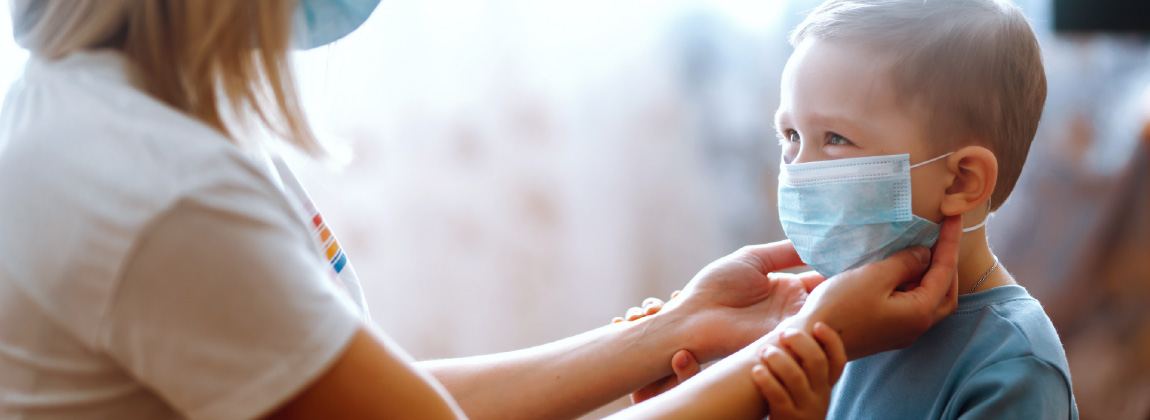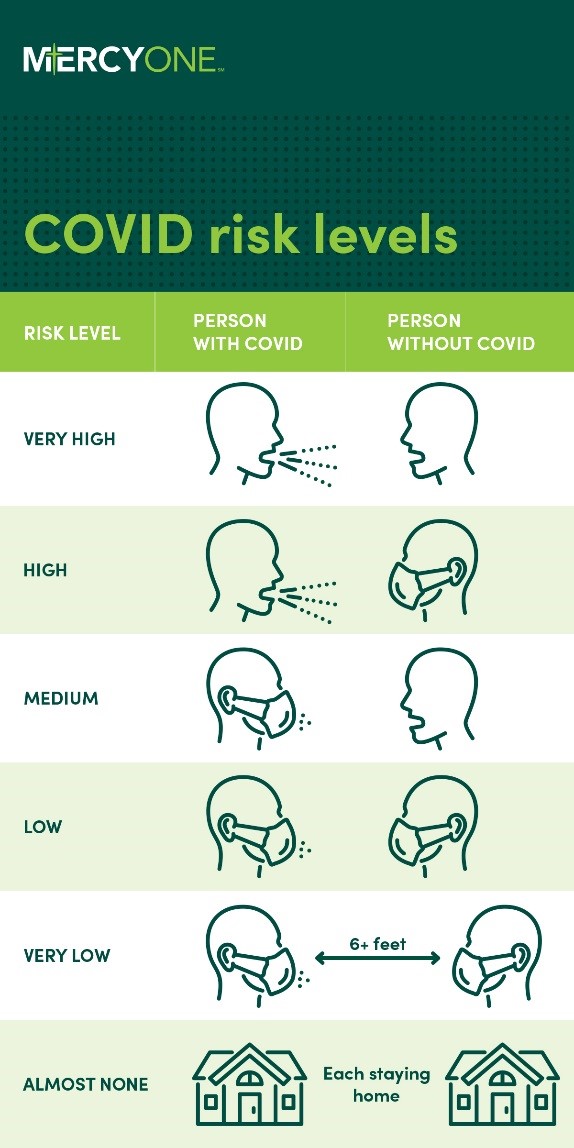Wear a Mask to Protect Yourself + the Community

Wearing a mask is a part of my daily routine. I manage critical care services at MercyOne Des Moines Medical Center along with an expert group of physicians, nurses and colleagues. Our work is challenging, and the COVID-19 virus has made it more so.
Right now, I feel safer at work than I do in the community. At work, I know who has COVID-19. In the community, I don’t. In the medical center, we take precautions to protect our patients and ourselves. We wear personal protective equipment (PPE); one of the most important parts is a mask.

The good news is anyone can wear a mask to lower their risk of exposure to COVID-19 — they just have to do it.
Reducing the Speed of Transmission
One of the scariest things about COVID-19 is the speed of transmission. A person can have the virus for 7 to 14 days before they get sick, or they may not show any symptoms. Studies have shown COVID-19 is spread by respiratory droplets created by coughing and sneezing. It can also be spread by talking or singing. This means one person not wearing a mask, who is closer than six feet, can spread the virus to a lot of people. While we learn more about COVID-19 and a vaccine is developed, it’s vital we practice prevention which is proven to work. This includes practices like avoiding large gatherings, physical distancing, frequent handwashing and wearing a mask.
At the start of the global pandemic, elderly patients were impacted the most; however, patients during the recent COVID-19 spike are younger. A patient’s age, health of their immune system and other existing health conditions can create an increased risk of critical illness or death. However, wearing a mask should not be just for those at high risk.
Each of us has the power within us to change the impact of the virus. The federal Centers for Disease Control and Prevention (CDC) has shared information that if the large majority of Americans wore masks, the COVID-19 pandemic could be brought under control within five to eight weeks. We want to see that happen.
Masking is not just about one person, it’s about everyone we come into contact with —intentionally or not. Think about an elderly grandparent, your parents or a child. We don’t know about everyone around us or if someone might have contracted the virus because they have a weakened immune system.
With the upcoming school year, families need to be talking now about masking. My family has had that talk and our children know the importance of wearing a mask if they can’t socially distance.
We are all in this together, and we will get past this virus. For the time being, the more we mask the better we will be. Share a photo of your mask with us on social media and let us know who you’re masking for using the hashtag #MaskUpDSM.
The Greater Des Moines Partnership is working with its partners to encourage businesses and community to Mask Up DSM. You can count on The Partnership to continue to share accurate and fact-based updates. See more on COVID-19 here.